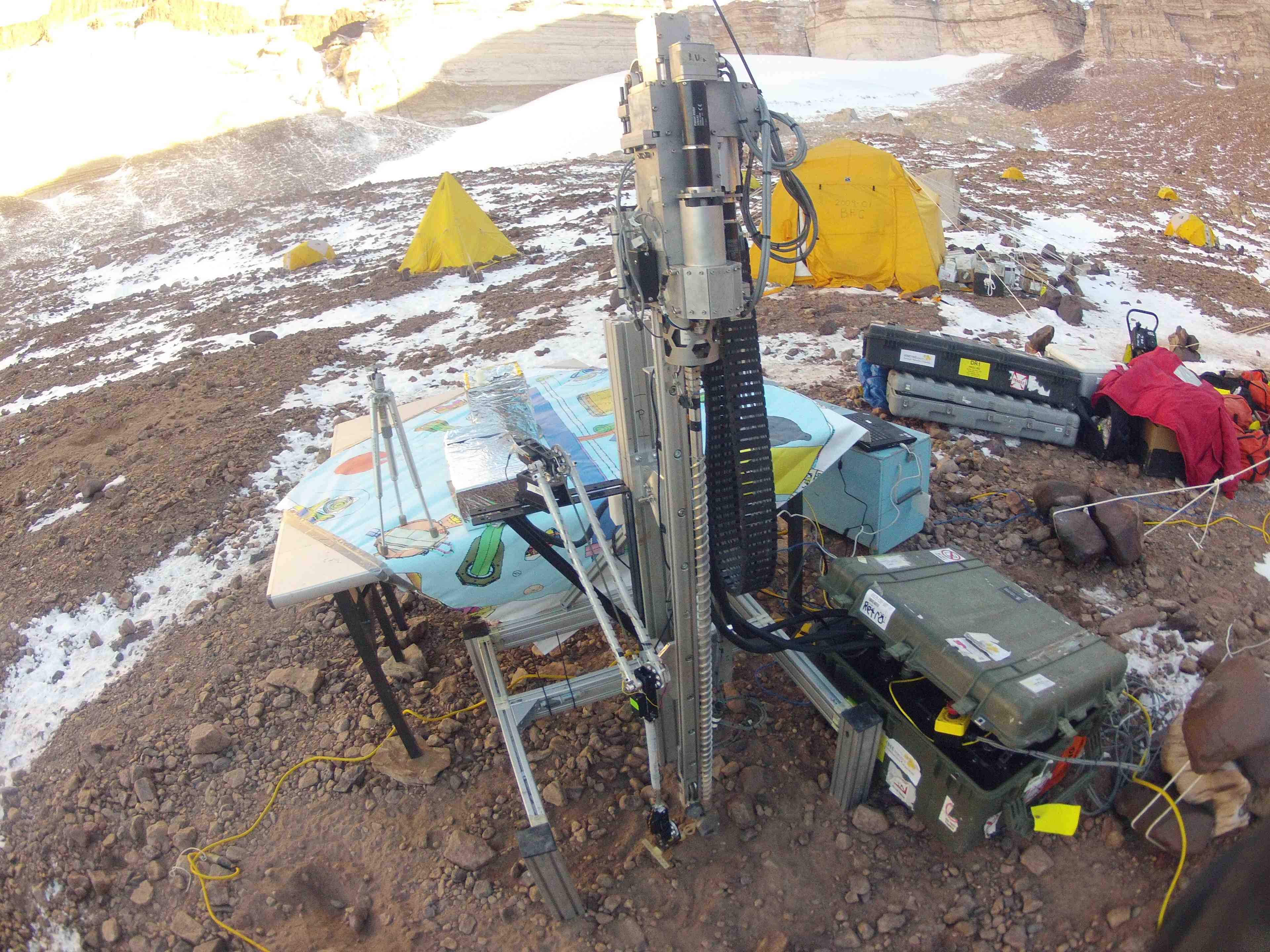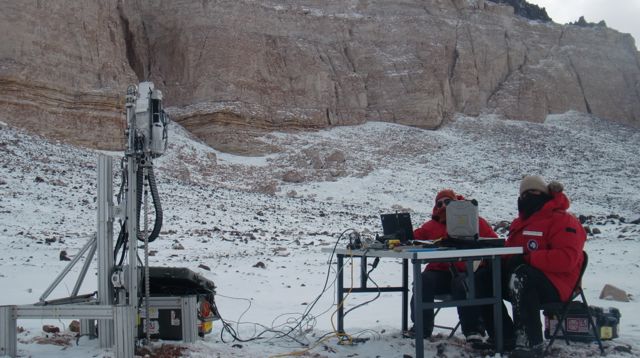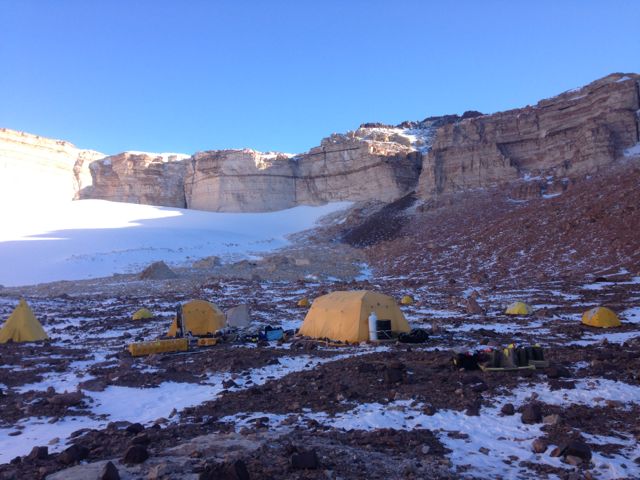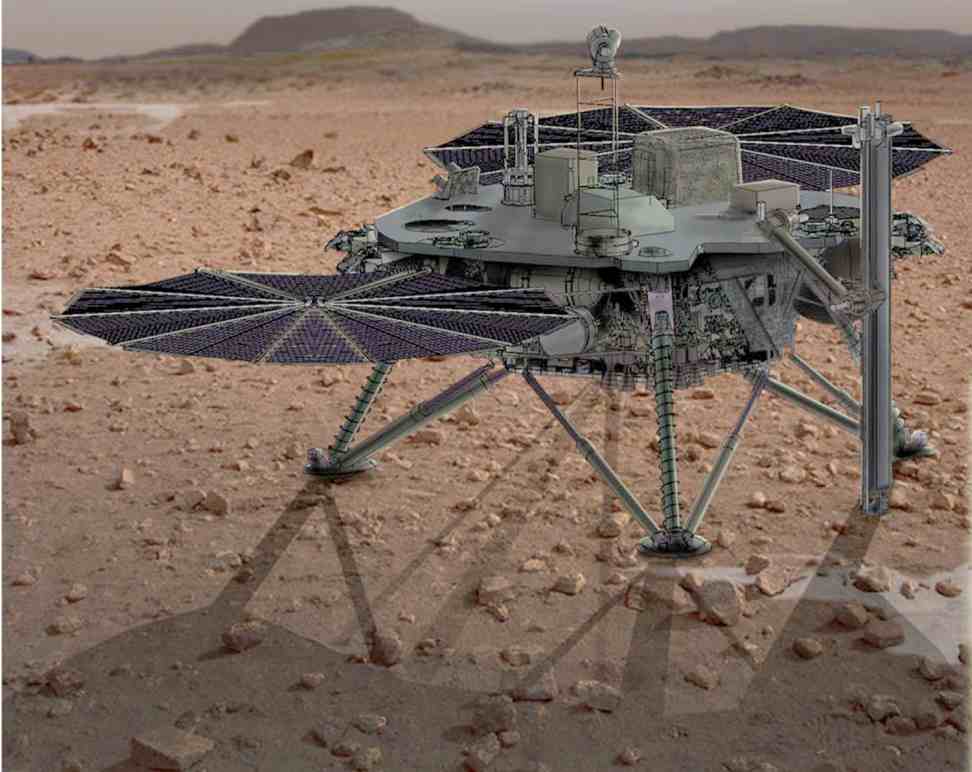The NASA Ames-led Icebreaker project field team has returned to McMurdo Station, after deploying to University Valley, one of the Dry Valleys of Antarctica, from 22-31 January. Team members studied the sparse life in the soil and rocks as an analog for the niches that we might search someday on Mars for signs of past or extant life there. Others drilled cores into the permafrost to study the past climate history here. And we tested an integrated subsurface sample acquisition and transfer system that could feed future instruments or a cache to be returned to Earth for analysis.
The Icebreaker drill was set up in University Valley first, on 23 January, and checked out. Added to it was a mockup Phoenix-like spacecraft deck, with mockup instruments with inlet ports and a robotic sample transfer arm. Remote commanding from Ames was possible through command encoding, compression, transmission (via Iridium satellite phone data link), reconstruction, and buffering (until read later and executed by the automated system). With time lags and store-and-forward aspects, it resembled the process of relaying commands via the Deep Space Network. The communications and the transfer robotics were set up and tested on 24-25 January. On 25 January my co-PI in the umbrella Icebreaker project, Dr. Chris McKay, sent a command file from his laptop at Ames. It was received here in University Valley about twenty minutes later, stored for three hours, then executed when the sample acquisition system came online. Icebreaker drilled 20 cm, then the arm transferred powdery cuttings to the instrument inlet ports, and a command acknowledgement log was stored and later sent back some hours later to McKay. This demonstrated remote automated subsurface sample acquisition, just as would be performed from a rover or lander on Mars.

Another goal of Dry Valleys testing was to exercise the control and automation software of the drill — detecting when it is getting itself in trouble, and adjusting its settings and actions to stay safe and continue to progress. All five major fault modes came up naturally in testing (given the harsh environment) and were detected and addressed. Including jammed bits, hard materials (or bit wearout), choking in its own cuttings, side-binding (usually due to a collapsed hole), and corkscrewing (like a stopper remover, the auger hangs and everything stretches). Drill automation tests in University Valley were held near base camp as well as farther out in the valley in a previously-unsurveyed bowl-shaped depression.

Team members (Glass, Mellerowicz) try to stay warm during drill automation
testing at the University Valley Mars-analog site.
Other team members finished their studies of climate change, and drilled (with larger commercial drills) to get clues regarding the subsurface populations of microbes at varying levels, as well as studying whether ice has been formed in the soil directly from atmospheric vapor exchange, vs. precipitation.
Our team completed all of our goals and objectives for this field season, and took down camp and returned by helicopter to McMurdo on 31 January. Apart from cleaning and turning in field equipment here, we had two more educational outreach sessions today (2 February) with classrooms near Montreal and Pleasanton, CA. One more E/PO session will be held early Tuesday before the team closes up in McMurdo. 
2013 University Valley field camp.



